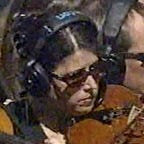Communal Remembering at the Intersection of Trauma and Body
Soma & Sarx, post #3
Together, we are a group of diverse bodies engaging in a mutual exploration of liberation theology, disability, queer, and Korean theologies. We felt drawn to explore our particular theologies because they personally connect to stories that connect to our bodies and the bodies of those we love. Just as attachment researcher Beatrice Beebe claims that, “most research is me-search,”¹ our theology is me-ology. Together we have sat vulnerably with our theologies and have come together with an invitation to have our trauma and pain seen and acknowledged. We have begun to understand more fully the beauty that our bodies uniquely offer, and we have asked more questions than exist ‘answers.’ What does health and healing look like? What does it look like to value people with differing abilities, to consider them as image bearers, to explore the relational nature of personhood; where do I belong?
In reading van der Kolk’s The Body Keeps the Score, and Frances Young’s Arthur’s Call, we (Lisa) became keenly aware of how individuals with differing cognitive and physical abilities are asked to carry a unique trauma within their body. This journey has opened our eyes to our society’s tendency to label differing abilities as, something that needs to be fixed, and has nudged us to redefine our understanding of health and healing. Individuals with differing abilities are traumatized by the projected labels, and opinions of so-called ‘normal people.’ For individuals with differing abilities, health and healing looks a lot like being able to see their identities as unique, important, and necessary in the world. Healing is learning to see themselves as created with intent, and purpose. For those struggling unable to do so, healing looks like, the community speaking this truth on their behalf.
We (Rachel) found complementary truths in Swinton’s, Dementia: Living in the Memories of God and found ourselves being asked the basic yet enigmatic question: what is personhood? This brought up ethical questions about the value of people of differing abilities, the imago Dei, and the relational nature of personhood. In examining the compounding losses of dementia and the diminishing agency these individuals experience, we are invited to recognize the tendency to assign human worth according to one’s ‘face-value,’ and re-define it outside of that which someone is able to give back to us. Through the love and service of a community we care for and protect the personhood of those living with dementia, and when we do this, we also open the door to a fuller picture of God and the imago Dei.
Liberation theologian, Gustavo Gutierrez discusses how the body of Christ is called to tend to individual suffering and trauma. Because God desires for humans to have free will, Gutierrez argues that God’s power and omnipotence is restrained by human choice and action.² He suggests that suffering is caused by our own injustice, and unaddressed because of our own posture of neglect.³ It is vital that the community acknowledge their perpetuation of suffering and respond to the suffering of others.
Han is a kind of remembering in the body of the unjust suffering of the community. It reminds us (Minjoo) of the ideas articulated in The Body Keeps the Score. Wonhee Joh argues, that the Korean Americans experience of han is about a “predominant feeling of having two places to stand and no place to stand on.”⁴ Han speaks to Minjoo’s felt experience of not belonging anywhere. And yet, in her roundtable discussion being with other female immigrants brought an ease to her soul. Sharing her Korean theology was understood and related to. Echoes of her han from these women nourished her and invited her into a place of belonging.
One of the most valuable truths we have acquired on our journey together has been to recognize the unique value of our bodies, and more so, for the need of our/other bodies to be in community to thrive. The community acts as individual threads in a greater tapestry. We have been struck by the way disparate voices, stories, and traumas have, and still need to be, woven together. We have come away with a greater desire to create space for everyone’s stories of trauma realizing that we require communal witness and care before there is healing within our soul.
…
- As cited in: Bessel van der Kolk, The Body Keeps the Score: Brain, Mind, and Body in the Healing of Trauma. (London: Penguin, 2014), 111.
- Gustavo Gutierrez, On Job: God-Talk and the Suffering of the Innocent, translated by Matthew O’Connell (Maryknoll, NY: Orbis, 1987), 77.
- Ibid.
- Wonhee Anne Joh, Heart of the Cross (Louisville, KY: Westminster John Knox Press, 2006), 119.
…
Bibliography
Gutierrez, Gustavo. On Job: God-Talk and the Suffering of the Innocent. Translated by Matthew O’Connell. Maryknoll, NY: Orbis, 1987.
Joh, Wonhee Anne. Heart of the Cross. Louisville, KY: Westminster John Knox Press, 2006.
Swinton, John. Dementia: Living in the Memories of God. Grand Rapids, MI: Eerdmans, 2012.
van der Kolk, Bessel. The Body Keeps the Score: Brain, Mind, and Body in the Healing of Trauma. London: Penguin, 2014.
Young, Frances. Arthur’s Call. London: SPCK, 2014.
